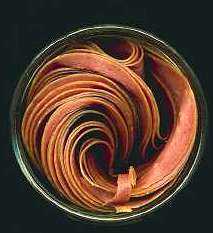Meat preservation

Meat preservation (including livestock, game poultry), includes a set treatment processes for preserving nutritious properties, taste, texture and color of raw, partially cooked or cooked meats while keeping them edible and safe to consume.
The invention of such processes can be traced back to antiquity, and although some come from 18th and 19th century research, the latest discoveries concerning meat preservation stem from nuclear physics and biochemistry.
The preservation of the meat has always been a method to prevent against famine, but has also acquired a political and economic dimension in the growth of the human population. In developed countries, this conservation depends largely upon the food industry rather than individuals. For lesser-developed countries, the Food and Agriculture Organization considers the absence of meat preservation techniques would present a serious obstacle to the development of viable meat production by resource-poor rural livestock producers.[1]
References
- ↑ Manual on simple methods of meat preservation, p.5. FAO, 1990, ISBN 92-5-102744-7.
| |||||||||||||||||||||||

